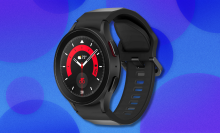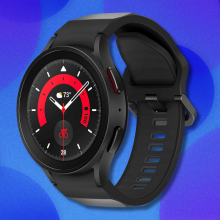For those looking to work out at home, elliptical machines are the top choice for many fitness fanatics who prefer to keep the gym as close to them as possible — AKA their home.
Most ellipticals don’t take up that much space, and they provide really comprehensive cardio workouts for even the most dedicated gym rats. But for some reason, ellipticals aren’t as well-respected as other cardio-based workout machines — we presume that’s because not everyone fully understands the benefits of using one. (More of a yoga person? Try this.)
Clair Mason, a co-founder of elliptical-based gym Elliptica, prefers the Keiser elliptical because it’s well-made and really easy to maintain. But at more than $2,000, it might not be the most practical buy for most home gyms.
The benefits of using an elliptical machine
Mason told us in an interview that there are some pretty clear benefits to an elliptical workout:
“You can get the same kind of cardio workout from a treadmill, or running outdoors, or a stationary bike — but the good thing about the elliptical [is that] you’re in the body’s natural position,” Mason says.
“You’re not hunching down like you are on a bike, you’re not pounding like you are on a treadmill or out on the road… it’s just the way the body is. It simulates a natural body movement.”
High-impact exercises can do a ton of damage to your joints over time, so sticking with low-impact workouts (like with an elliptical machine) is the way to go. That’s not the only benefit of using an elliptical machine, though.

“The engineering of the equipment is based on a push/pull movement that syncs the arms and legs of the user simultaneously, maximizing a dual-action movement,” said Josh Grimm, a certified personal trainer and fitness expert with Zeamo, an app that helps you find a gym while traveling.
“Keep in mind, you can also reverse pedal, which works in the hamstrings and the calves.”
Ellipticals vs treadmills
Ultimately, either an elliptical or a treadmill will be a good purchase, and you'll be able to get in great cardio workouts by using either of them, but there are a few key differences between the two that you'll want to know before making your final decision.
Ellipticals are going to be best for those who want to incorporate an upper-body workout into their cardio session, as well as keep their joints in great shape, like we mentioned before (ellipticals involve less impact compared to treadmills, where your feet slam on the belt continuously). Injury-prone gym goers should definitely look for an elliptical.
While treadmills are high-impact and are harder on your joints, they offer more control, opportunities to build leg strength, and it's a faster way to burn calories. You can't go wrong with either one if you're looking to improve your cardiac health — just buy the one that's more in tune with your body and preferences. (For this article, we'll just be focusing on ellipticals, though.)
Why are elliptical machines so expensive?
Your eyes might roll into the back of your head when you see some of these prices, but unfortunately, they are pretty standard for quality gym equipment. If you want something that will rival your local gym, you're going to need to make it an investment. But don't worry, as long as you use the equipment you buy consistently (and not just for gym selfies), they'll eventually pay for themselves with all the money you're saving by breaking up with your gym membership.
There are also low-budget options for ellipticals, but even those will cost you some serious cash, so we say go for quality first. Many brands offer payment plans for their equipment, too, so be sure to look into those if you're not in the place to pay everything upfront.
What to consider when buying a home elliptical machine
When shopping for an elliptical machine for your own home gym, there are a few different things you should be aware of before making a purchase. After all, there are a ton of options, and they range in price from less than $150 to nearly $3,000.
Here's what to consider:
Size: Most ellipticals will take up quite a bit of space, but not all of them are totally gigantic. Take stock of the space you're planning on turning into your home gym and pick an elliptical that you don't foresee yourself tripping over all the time.
Resistance settings: If you're looking for an intense cardio workout, you'll want to pick up an elliptical with a wide range of resistance settings so you can also build strength during your stride. Most of the time, this information is super easy to find in product listings.
Bluetooth capabilities: Most quality ellipticals will have some sort of Bluetooth functionality, whether it's being able to connect headphones, companion tracking apps, and more. We think it's worth making sure you'll get this benefit, as it can really enhance your overall fitness experience.
Workout programs: Some ellipticals will feature live and/or on-demand workout classes within their built-in screens for extra guidance during your workouts. If you're newer to using an elliptical or just want to feel like you're working out with other people, we recommend making sure your elliptical of choice has this feature.
Heart rate monitors: Ellipticals with built-in heart rate monitors can better track your burned calories and even adjust resistance automatically based on your BPM. It's not essential, but it's a nice benefit to have, for sure.
Delivery, returns, and warranties: Finally, you'll want to make sure the brand you buy from has good delivery, return, and warranty policies. You might be dropping a few grand on one of these things, so the extra reassurance is welcome.
What are the best elliptical machines for your home gym?
We spoke to a range of fitness experts while coming up with this list, and the overwhelming winners based on our research were the machines from Sole Fitness and NordicTrack. Read on to see all our top picks for the best elliptical machines you can buy online and get some buying tips on how to choose the best elliptical for you.


























